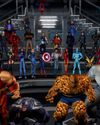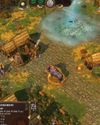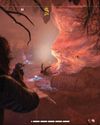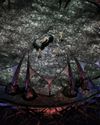
In early April, Bungie released a teaser video detailing some of the new features it had planned for Destiny 2’s sixth expansion, The Final Shape. The reaction from the community was immediate: “We’re so back!”
Before that teaser, the mood around Destiny 2 was decidedly different. The game’s last expansion, Lightfall, was poorly received. As the penultimate release of Destiny’s first saga, its story felt like a sidequest – rushing through poorly explained plot threads that, outside of a couple of important cutscenes, felt inconsequential to the broader narrative. More damaging, arguably, was the way the sandbox had been changed. In an effort to bring challenge back to the game, Lightfall brought sweeping nerfs to weapon damage and ability uptime – players were being asked to put in more effort for largely the same reward.
It was a year, I think, that many players realised they had burned out on Destiny. The first game released almost ten years ago on consoles, and Destiny 2 itself has been running since 2017. Across that long history, Bungie has been no stranger to controversy – the difficulties of running a live service game, especially one that is also a bigbudget first-person shooter with a focus on co-operative PvE activities, has often led the studio towards solutions that run counter to what the playerbase wants. There is nothing else like Destiny, not at the scope and scale that Bungie is making it on. But that means there is no obvious template to follow. For all the great times across that decade, there have been plenty of major missteps too.
Esta historia es de la edición July 2024 de PC Gamer.
Comience su prueba gratuita de Magzter GOLD de 7 días para acceder a miles de historias premium seleccionadas y a más de 9,000 revistas y periódicos.
Ya eres suscriptor ? Conectar
Esta historia es de la edición July 2024 de PC Gamer.
Comience su prueba gratuita de Magzter GOLD de 7 días para acceder a miles de historias premium seleccionadas y a más de 9,000 revistas y periódicos.
Ya eres suscriptor? Conectar

A New Dawn - The rise, fall and rise again of PC Gaming in Japan
The so-called 'Paso Kon' market (ie katakana's transliteration of 'Pasonaru Computa') in Japan was originally spearheaded in the 1980s by NEC's PC-8800 and, later, its PC-9800.

MARVEL: ULTIMATE ALLIANCE
Enter the multiverse of modness.

SLIDES RULE
Redeeming a hated puzzle mechanic with SLIDER

GODS AND MONSTERS
AGE OF MYTHOLOGY: RETOLD modernises a classic RTS with care

PHANTOM BLADE ZERO
Less Sekiro, more Wo Long: Fallen Dynasty

STARR-MAKING ROLE
Final Fantasy XVI's BEN STARR talks becoming a meme and dating summons

THIEF GOLD
Learning to forgive myself for knocking out every single guard.

HANDHELD GAMING PCs
In lieu of more powerful processors, handhelds are getting weirder

FAR FAR AWAY
STAR WARS OUTLAWS succeeds at the little things, but not much else shines

FINDING IMMORTALITY
Twenty-five years on, PLANESCAPE: TORMENT is still one of the most talked-about RPGs of all time. This is the story of how it was created as a ‘stay-busy’ project by a small team at Black Isle Studios